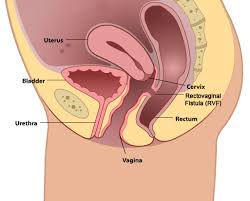A rectovaginal fistula (RVF) is an epithelial-lined tract between the rectum and vagina. For thousands of years, women simply tolerated the distressing symptoms generated by RVFs. Today, there is no need for such tolerance, because most RVFs can be surgically corrected via a number of approaches. [1] A small percentage, however, cannot be corrected, because of patient comorbidity or disease-related factors; in these cases, patients can be helped only by fecal diversion. [2] This article discusses only acquired RVFs. Most RVFs are located at or just above the dentate line. Fistulas below the dentate line are not true RVFs but, rather, anovaginal fistulas; the treatment required for these differs from that required for RVFs.



 Contact Us
Contact Us






 Hospitals
Hospitals
 Doctors
Doctors
 Diagnostic
Diagnostic
 Pharmacy
Pharmacy
 Health Tips
Health Tips
 Blog
Blog

























Comments